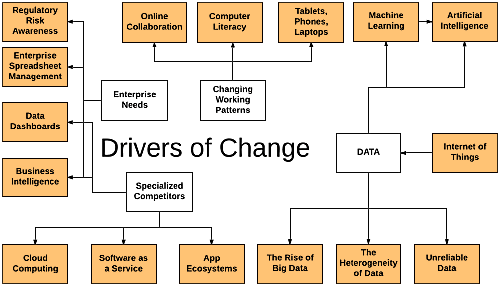Authors
David Birch, David Lyford-Smith, & Yike Guo
Abstract
The humble spreadsheet is the most widely used data storage, manipulation and modelling tool. Its ubiquity over the past 30 years has seen its successful application in every area of life.
Surprisingly the spreadsheet has remained fundamentally unchanged over the past three decades. As spreadsheet technology enters its 4th decade a number of drivers of change are beginning to impact upon the spreadsheet. The rise of Big Data, increased end-user computing and mobile computing will undoubtedly increasingly shape the evolution and use of spreadsheet technology.
To explore the future of spreadsheet technology a workshop was convened with the aim of "bringing together academia and industry to examine the future direction of spreadsheet technology and the consequences for users".
This paper records the views of the participants on the reasons for the success of the spreadsheet, the trends driving change and the likely directions of change for the spreadsheet. We then set out key directions for further research in the evolution and use of spreadsheets. Finally we look at the implications of these trends for the end users who after all are the reason for the remarkable success of the spreadsheet.
Sample

The evolution of technology has and will continue to impact upon the evolution of the spreadsheet and affect their users.
These drivers of change may impact gradually or bring rapid, fundamental change.
It remains to be seen whether this will require augmentation of the spreadsheet as we know it with new features and tools or whether a more fundamental change of the underlying spreadsheet model will be required.
Publication
2017, EuSpRIG
